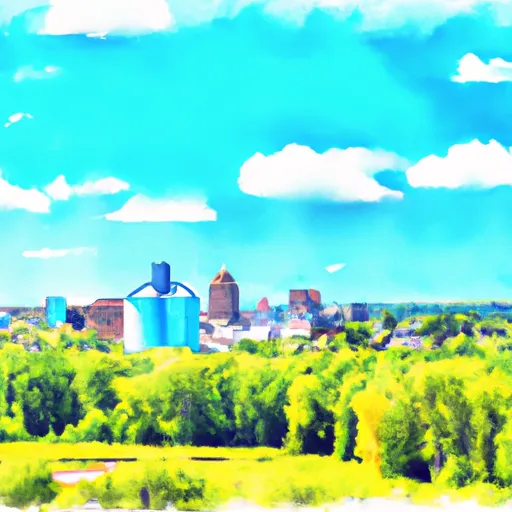-
 Snoflo Premium
Snoflo Premium
Get unlimited access to all our content
With no Ad interruptions! - Start Your Free Trial Login with existing account
Knife-River
Eden Index
Climate
5.6
•
Recreation
2.7
•
Community
•
Safeguard
3.2/10

Knife River is a charming small town located in northeastern Minnesota along the scenic North Shore of Lake Superior. The climate in Knife River falls under the humid continental category, characterized by cold winters and mild summers. Winter temperatures can drop well below freezing, while summer temperatures range from the 60s to 80s Fahrenheit.
The town is nestled near the mouth of the Knife River, which flows into Lake Superior. The hydrology constituents include pristine waters, rocky shorelines, and sandy beaches. The river is ideal for fishing, as it hosts an abundance of trout, salmon, and steelhead, attracting anglers from across the region.
Outdoor enthusiasts can explore a range of activities in Knife River. The nearby state parks and forests offer opportunities for hiking, camping, birdwatching, and wildlife spotting. The Lake Superior shoreline invites visitors to indulge in beachcombing, kayaking, canoeing, and swimming during the warmer months. In the winter, cross-country skiing, snowshoeing, and ice fishing are popular activities.
Knife River's breathtaking natural beauty, along with its diverse outdoor recreation opportunities and unique hydrology constituents, make it a must-visit destination for nature lovers and adventure seekers.
What is the Eden Index?
The Snoflo Eden Index serves as a comprehensive rating system for regions, evaluating their desirability through a holistic assessment of climate health, outdoor recreation opportunities, and natural disaster risk, acknowledging the profound impact of these factors on livability and well-being.
Climate Health Indicator (CHI): 5.6
Knife-River receives approximately
763mm of rain per year,
with humidity levels near 82%
and air temperatures averaging around
5°C.
Knife-River has a plant hardyness factor of
4, meaning
plants and agriculture in this region thrive during a short period during spring and early summer. Most
plants will die off during the colder winter months.
By considering the ideal temperature range, reliable water supplies, clean air, and stable seasonal rain or snowpacks, the Climate Health Indicator (CHI) underscores the significance of a healthy climate as the foundation for quality living.
A healthy climate is paramount for ensuring a high quality of life and livability in a region, fostering both physical well-being and environmental harmony. This can be characterized by ideal temperatures, reliable access to water supplies, clean air, and consistent seasonal rain or snowpacks.
Weather Forecast
Streamflow Conditions
Northwestern Lake Superior
Area Rivers
Northwestern Lake Superior
Snowpack Depths
Northwestern Lake Superior
Reservoir Storage Capacity
Northwestern Lake Superior
Groundwater Levels
Recreational Opportunity Index (ROI): 2.7
The Recreational Opportunity Index (ROI) recognizes the value of outdoor recreational options, such as parks, hiking trails, camping sites, and fishing spots, while acknowledging that climate plays a pivotal role in ensuring the comfort and consistency of these experiences.
Access to outdoor recreational opportunities, encompassing activities such as parks, hiking, camping, and fishing, is crucial for overall well-being, and the climate plays a pivotal role in enabling and enhancing these experiences, ensuring that individuals can engage in nature-based activities comfortably and consistently.
Camping Areas
| Campground | Campsites | Reservations | Toilets | Showers | Elevation |
|---|---|---|---|---|---|
| Battle of Athens State Park | None | 664 ft | |||
| Austin County Park | None | 578 ft | |||
| Shimek State Forest | None | 691 ft | |||
| Bentonsport | None | 561 ft | |||
| Lake Sugema County Park | None | 741 ft | |||
| Indian Lake Park | None | 595 ft | |||
| Sever Lake Conservation Area - MDC | 84 | 736 ft | |||
| Lacey - Keosauqua State Park | 113 | 744 ft | |||
| Round Prairie Park | None | 723 ft | |||
| Oakland Mills Park | 50 | 573 ft |
Nearby Ski Areas
Catastrophe Safeguard Index (CSI):
The Catastrophe Safeguard Index (CSI) recognizes that natural disaster risk, encompassing floods, fires, hurricanes, and tornadoes, can drastically affect safety and the overall appeal of an area.
The level of natural disaster risk in a region significantly affects safety and the overall livability, with climate change amplifying these risks by potentially increasing the frequency and intensity of events like floods, fires, hurricanes, and tornadoes, thereby posing substantial challenges to community resilience and well-being.
Community Resilience Indicator (CRI):
The Community Resilience Indicator (CRI) recognizes that education, healthcare, and socioeconomics are crucial to the well-being of a region. The CRI acknowledges the profound impact of these elements on residents' overall quality of life. By evaluating educational resources, healthcare accessibility, and economic inclusivity, the index captures the essential aspects that contribute to a thriving community, fostering resident satisfaction, equity, and social cohesion.

